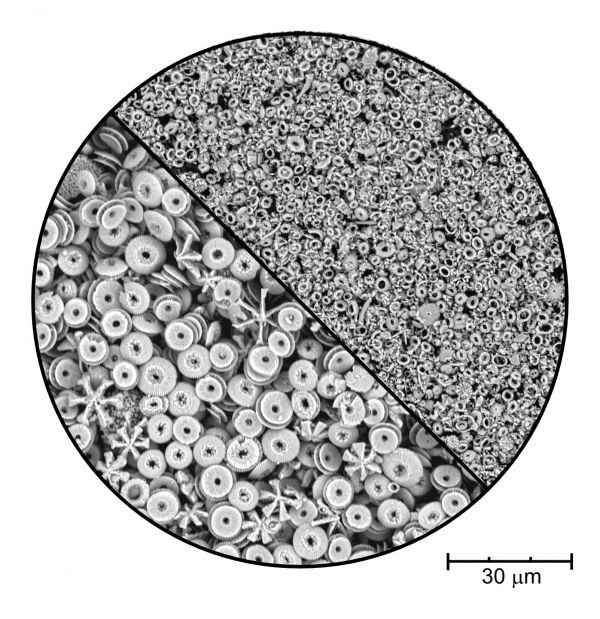Is Theory on Earth’s Climate in the Last 15 Million Years Wrong?
A key theory that attributes the climate evolution of the Earth to the breakdown of Himalayan rocks may not explain the cooling over the past 15 million years, according to a Rutgers-led study.
The study in the journal Nature Geoscience could shed more light on the causes of long-term climate change. It centers on the long-term cooling that occurred before the recent global warming tied to greenhouse gas emissions from humanity.
“The findings of our study, if substantiated, raise more questions than they answered,” said senior author Yair Rosenthal, a distinguished professor in the Department of Marine and Coastal Sciences in the School of Environmental and Biological Sciences at Rutgers University–New Brunswick. “If the cooling is not due to enhanced Himalayan rock weathering, then what processes have been overlooked?”
Read more at Rutgers University
Photo: Left: Large coccoliths – disks made of calcium carbonate that armor single-celled algae called coccolithophores – from the Middle Miocene about 16 million to 11.6 million years ago. Right: Small coccoliths from the Pleistocene about 2.6 million to 11,700 years ago. Photo Credit: Weimin Si


